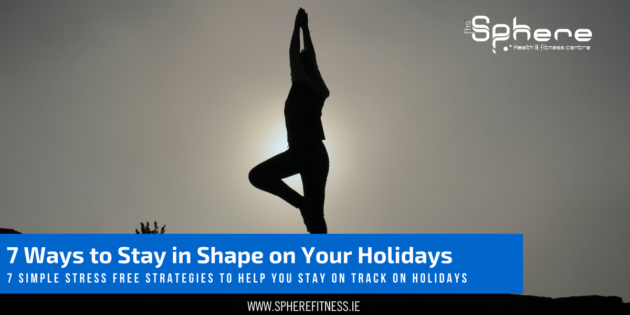When you first started your 8 week holiday journey you did so with a firm date in your mind. Your holiday, or a stint of traveling that would have you away from your routine for a couple of days, weeks even months.
You train and diet your backside off and know that this impending holiday and vacation time is time to kick back.
Except last time you ‘kicked back’ you came back in a worse state than when you first started your journey. Half a stone, maybe more.
That sucks.
It sucks even more when you think of the effort it took to get you in great shape.
Cue the emotional guilt, diet rebound and feelings of utter contempt for this ‘healthy lifestyle’. I will get back to it Monday. Except Monday never comes.
It doesn’t have to be like this every Summer time. This is where some smart strategies kick in. You can have your sangria and drink it.
1. Relax.
The stress of worrying about diets will do more harm than good. The point of a holiday is a break from normal routine. Worrying about macros, calories and ‘clean eating’ is only going to add anxiety to your life when you are met with the all you can eat buffet with 12 varieties of croissant.
I am pretty sure all you can eat buffets for example give folks cart blanche to ‘load up’ and get some value.
Relax. Yet behave like an adult – not some reckless toddler with a free for all permit in the pick and mix shop.
2. Your average intake of calories is enough
So what you had a dessert or two, a couple of beers and an ice cream with the kids? It doesn’t matter when you actually look at the evidence behind calorie consumption AND experience in this.
I have seen folks return from holiday maybe 1-2 lbs heavier having eaten all around them (not a bad trade off)
Me – inexperienced me – bewildered – asks them how?
“Well I ate what I wanted but just cut back on other things the day after. I didn’t go too mad, but didn’t deny myself either. I did some other things too like moving more, eating less at other meals – it didn’t require too much thought just a little bit of discipline”
Cue the face plant of simplicity.
When you look at the evidence too, calories are number 1. You need to get these right and as an average over the week. That gives you days of higher intake combined with days of lower intake.
And this is why tracking is soooo important. Because you know. You just know how much you need to either maintain or lose weight. You know what 500 kcals of a plate looks like. You know that each beer is around 150-200 kcal. You know that a chocolate bar can be between 200-250 kcal. How? Because you tracked.
Which means eyeballing your portions when you are not measuring…
3. Eyeball your portions
You know that that lovely piece of fish is around 40g of protein, that pasta on your plate is 30g and there is a lovely tablespoon of olive oil dressing which is around 15g and 90 kcal. How? Because those few weeks you spent tracking has given you the insight.
You can eyeball things pretty easy when you are on a roll.
Some of simplest is arranging your plate into the 4s.
Protein
Starches
Veggies
Fats
Ask yourself – where is each of these components? Protein – 1-2 palms, starches 1-2 cupped palms, veggies – as much as you can muster and fats 1-2 thumbs.
Sometimes a change in environment and behaviors can mean a change in eating patterns.
More fresh, local produce that is ‘worth a try’. Less time in environments which trigger sensory reactions to food – after all you are not hovering around your kitchen! More time spent engaged in eating can mean eating less at meal times although the caveat to that is eating in groups has found to mean you consume more. Least not forget though holidays can mean more time on your feet getting activity exploring the area.
It all adds up.
4. Skip breakfast
Limiting your feeding window can help. Let’s say you get up a little later, skip breakfast and wait for lunch – control your intake there and then dinner is a few drinks and a lovely meal.
That ‘fast’ you did earlier in the day can give you a day of lower caloric intake without too much stressing about your ‘diet’.
How? You have spread your daily caloric intake over 2 meals instead of 3. This has automatically lowered your caloric intake.
5. Walk more
Aside from the relaxation of the pool or beach, there is plenty of opportunity to do more and ramp up the activity levels in a way that doesn’t ‘feel’ like exercise. Play, poodles in the pool, bit of golf, multiple walks to the shops, in the evening and during the day and suddenly you have increased your baseline activity levels by 50%!
6. Hit the gym
If you are a wee gym bunny or love the iron then hitting up new gyms can really lead to some great training sessions. Most places, especially foreign destinations offer punch cards for the time you are there. Personally, the change in environment from my own gym really freshens things up.
7. Time for reflection
You are on a roll, and you can switch off without needing to switch off entirely from a healthy lifestyle. After all – the best diet and exercise plan is one you can take anywhere. So ask yourself this…are you currently eating like a monk for the holiday or for life. If its the former you need to reevaluate your plan.
BONUS – Before you go
Line up your environment as healthy as you can make it. One executive always asked for a fridge in his room. When he landed his first port of call was a supermarket where he could load up on fruit, vegetables, protein sources such as bars and deli meats and nuts. Simple but it kept him in control, not at the mercy of a buffet breakfast. He commented that his performance in terms of energy was significantly better as a result of this.
Google map your local gym and ask them ahead if they do pay as you go sessions. I love training in a new environment. A chance to experience new toys and a different setting.
Whilst you are there google map the local healthy places to eat at lunch and breakfast. See about the menus in advance. I even had one client who ordered in meals ahead of time to be there waiting for him at the workplace. Most cities offer this service with every diet catered for.
Essential items to carry with you are runners, gym gear, a red resistance band and even a TRX particularly if you are beach bound (I always pack this – great for a few sprints on the beach and then some body weight variations at the local playground)
Bonus -Exercise for the Executive
When you land get the journey out of your system with a brisk walk or some light cardio. This has been proven to reduce the effects of jet lag. I know most sports teams would loosen the legs and get the circulation flowing directly after a flight. It gets you accustomed to what is around you. Does the hotel have a gym? Where is the nearest supermarket? Park run?
Most hotel gyms are not catered sufficiently enough for strength gains but they are great for keeping up the habit and nurturing activity. Take the stairs, walk everywhere and if there is a hotel gym try this simple dumbbell workout.
For our clients who travel more than 3 days per week we have them set up with our online training platform. This allows us to keep in touch with them and ensure progress in such a way that maximises their efforts.
BONUS – Diet for the Executive
Traveler
Whilst the continental buffet breakfast is tempting try and stick to the protein based breakfast. Think a healthy grill over pastries and juice. This is more likely to keep your blood sugar levels stable. Most times folks eat an early breakfast and then nothing till late afternoon. This will help you keep performing. The alternative is an energy crash, a bucket load of coffee and poor food choices later in the day.
Pack a protein bar or two in your briefcase if you do get peckish. An apple and a few nuts are also great as a meal on the run. Note I said a meal. Snacking on this all day may lead to overeating as in my experience this simple snack often replaces a meal whereby a meal would have fulfilled you better encouraging you to eat less.
Whilst it is often tempting to get stuck into pints and bottles of wine this can really knock you back on your goals. These have helped clients in the past. For example, alternate rounds of drinks (soft vs alcoholic). As the night progresses a gin and tonic looks the same as a soda lime. Try banning your calories earlier in the day. Skip breakfast and lunch if you know that dinner will be a big occasion. You will be surprised at how you may be able to keep in a caloric deficit on this occasion or even at maintenance level. The next day head back to your normal eating pattern.
Sticking to a protein and vegetable based diet at the majority of your meals when you are away is quite easy. Breakfast and lunch can be carb free leaving you the evening to eat a bit more in terms of the pasta, rice, spuds and alcohol. Again this is like banking up your calories. It may look like an omelette for breakfast, chicken salad for lunch and then a meal out with the team in the evening.







